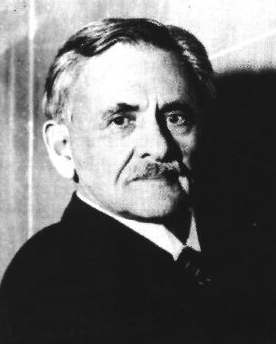Light Waves and Their Uses Page 146.
Albert Abraham Michelson: Citáty v angličtine
Light Waves and Their Uses. By Albert A. Michelson. Published by The University of Chicago Press, 1903, pp 23-25.
Kontext: Before entering into these details, however, it may be well to reply to the very natural question: What would be the use of such extreme refinement in the science of measurement? Very briefly and in general terms the answer would be that in this direction the greater part of all future discovery must lie. The more important fundamental laws and facts of physical science have all been discovered, and these are so firmly established that the possibility of their ever being supplanted in consequence of new discoveries is exceedingly remote. Nevertheless, it has been found that there are apparent exceptions to most of these laws, and this is particularly true when the observations are pushed to a limit, i. e., whenever the circumstances of experiment are such that extreme cases can be examined. Such examination almost surely leads, not to the overthrow of the law, but to the discovery of other facts and laws whose action produces the apparent exceptions.As instances of such discoveries, which are in most cases due to the increasing order of accuracy made possible by improvements in measuring instruments, may be mentioned: first, the departure of actual gases from the simple laws of the so-called perfect gas, one of the practical results being the liquefaction of air and all known gases; second, the discovery of the velocity of light by astronomical means, depending on the accuracy of telescopes and of astronomical clocks; third, the determination of distances of stars and the orbits of double stars, which depend on measurements of the order of accuracy of one-tenth of a second—an angle which may be represented as that which a pin's head subtends at a distance of a mile. But perhaps the most striking of such instances are the discovery of a new planet by observations of the small irregularities noticed by Leverier in the motions of the planet Uranus, and the more recent brilliant discovery by Lord Rayleigh of a new element in the atmosphere through the minute but unexplained anomalies found in weighing a given volume of nitrogen. Many instances might be cited, but these will suffice to justify the statement that "our future discoveries must be looked for in the sixth place of decimals." It follows that every means which facilitates accuracy in measurement is a possible factor in a future discovery, and this will, I trust, be a sufficient excuse for bringing to your notice the various methods and results which form the subject matter of these lectures.
Light Waves and Their Uses. By Albert A. Michelson. Published by The University of Chicago Press, 1903, pp 23-25.
Kontext: Before entering into these details, however, it may be well to reply to the very natural question: What would be the use of such extreme refinement in the science of measurement? Very briefly and in general terms the answer would be that in this direction the greater part of all future discovery must lie. The more important fundamental laws and facts of physical science have all been discovered, and these are so firmly established that the possibility of their ever being supplanted in consequence of new discoveries is exceedingly remote. Nevertheless, it has been found that there are apparent exceptions to most of these laws, and this is particularly true when the observations are pushed to a limit, i. e., whenever the circumstances of experiment are such that extreme cases can be examined. Such examination almost surely leads, not to the overthrow of the law, but to the discovery of other facts and laws whose action produces the apparent exceptions.As instances of such discoveries, which are in most cases due to the increasing order of accuracy made possible by improvements in measuring instruments, may be mentioned: first, the departure of actual gases from the simple laws of the so-called perfect gas, one of the practical results being the liquefaction of air and all known gases; second, the discovery of the velocity of light by astronomical means, depending on the accuracy of telescopes and of astronomical clocks; third, the determination of distances of stars and the orbits of double stars, which depend on measurements of the order of accuracy of one-tenth of a second—an angle which may be represented as that which a pin's head subtends at a distance of a mile. But perhaps the most striking of such instances are the discovery of a new planet by observations of the small irregularities noticed by Leverier in the motions of the planet Uranus, and the more recent brilliant discovery by Lord Rayleigh of a new element in the atmosphere through the minute but unexplained anomalies found in weighing a given volume of nitrogen. Many instances might be cited, but these will suffice to justify the statement that "our future discoveries must be looked for in the sixth place of decimals." It follows that every means which facilitates accuracy in measurement is a possible factor in a future discovery, and this will, I trust, be a sufficient excuse for bringing to your notice the various methods and results which form the subject matter of these lectures.
1894, dedication of Ryerson Physical Laboratory, quoted in Annual Register 1896, p. 159 https://books.google.com/books?id=HysXAAAAYAAJ&pg=PA159.
Variants of this quote have been misattributed to Lord Kelvin since the 1980s, though there is no evidence that he said anything of the sort. The identity of the unnamed "eminent physicist" is unknown.
Concluding that there is no stationary ether with respect to which the earth moves while orbiting around the sun. On the Relative Motion of the Earth and the Luminiferous Ether by Albert A. Michelson and Edward W. Morley. American Journal of Science, 1887, 34 (203): 333–345.
